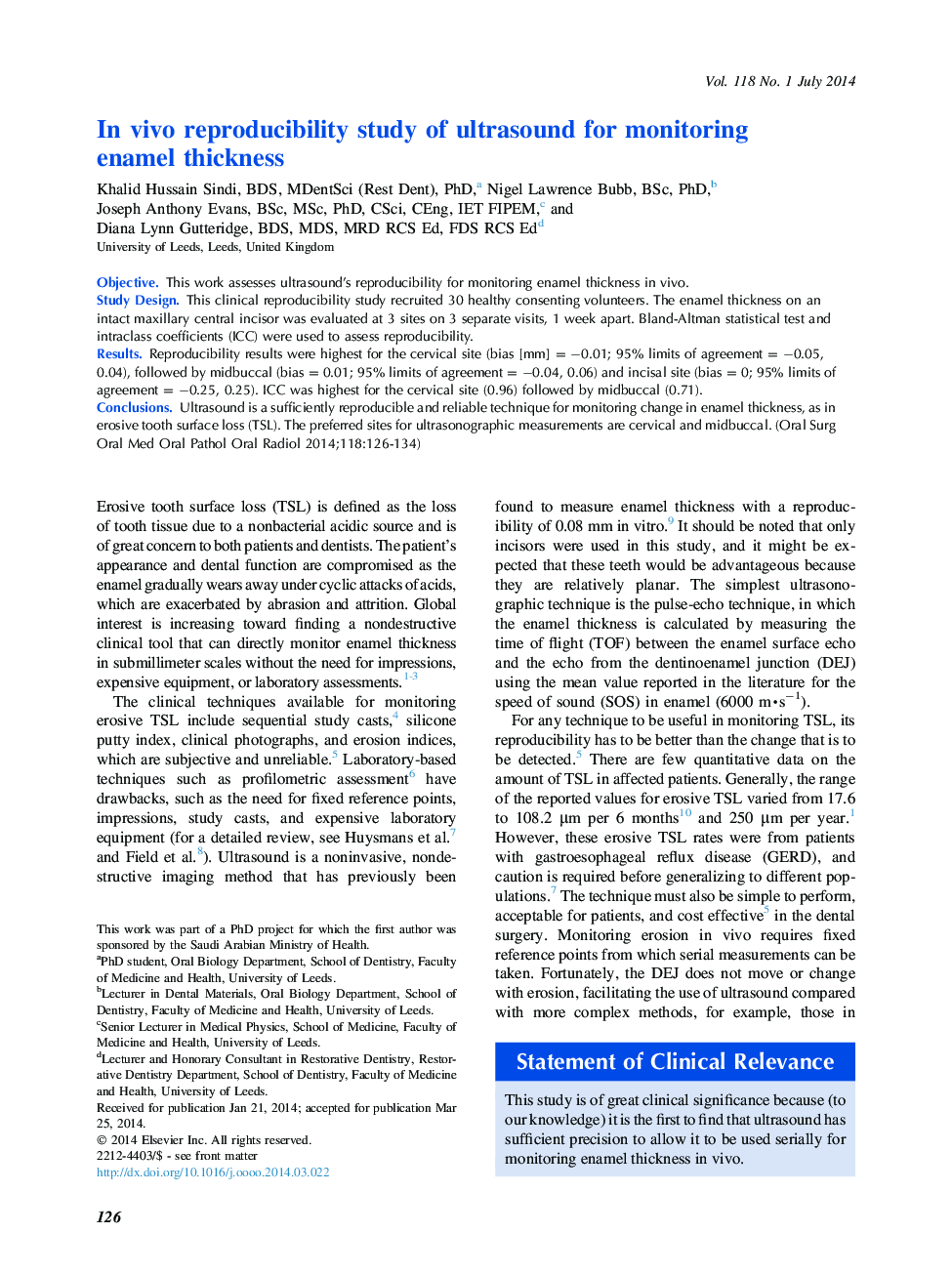| Article ID | Journal | Published Year | Pages | File Type |
|---|---|---|---|---|
| 6056689 | Oral Surgery, Oral Medicine, Oral Pathology and Oral Radiology | 2014 | 9 Pages |
ObjectiveThis work assesses ultrasound's reproducibility for monitoring enamel thickness in vivo.Study DesignThis clinical reproducibility study recruited 30 healthy consenting volunteers. The enamel thickness on an intact maxillary central incisor was evaluated at 3 sites on 3 separate visits, 1 week apart. Bland-Altman statistical test and intraclass coefficients (ICC) were used to assess reproducibility.ResultsReproducibility results were highest for the cervical site (bias [mm] = â0.01; 95% limits of agreement = â0.05, 0.04), followed by midbuccal (bias = 0.01; 95% limits of agreement = â0.04, 0.06) and incisal site (bias = 0; 95% limits of agreement = â0.25, 0.25). ICC was highest for the cervical site (0.96) followed by midbuccal (0.71).ConclusionsUltrasound is a sufficiently reproducible and reliable technique for monitoring change in enamel thickness, as in erosive tooth surface loss (TSL). The preferred sites for ultrasonographic measurements are cervical and midbuccal.
